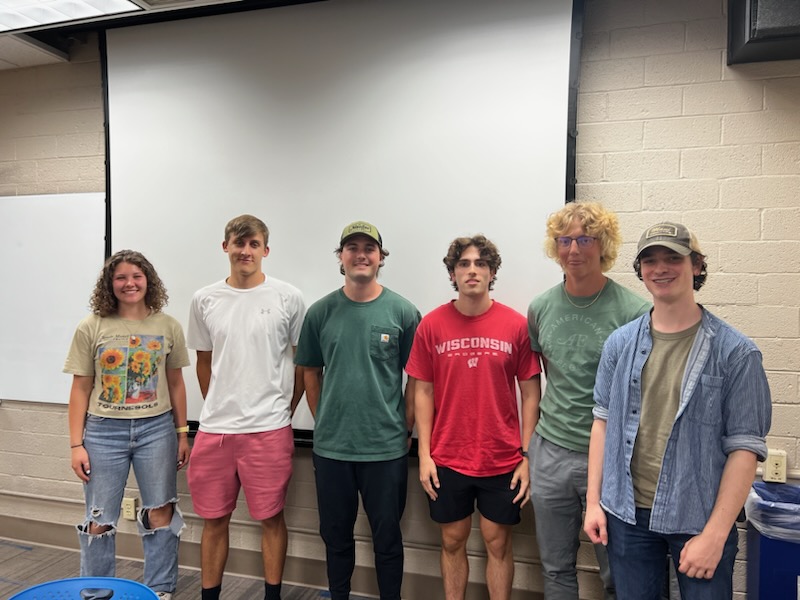Structural and mechanical functions of bones, muscles and joints by use of 3D models in veterinary medical education
Create the muscles of the forelimb of a dog that can attach to a 3D model of articulated bones and will serve to teach first-year anatomy students how dog muscles work.
Project Overview
Currently, the Anatomy program at UW Madison does not have a complete 3D model of dog muscles that students can use to understand anatomy. In particular, students have a difficult time understanding the connectivity of muscles in the shoulder and the hip of dogs. Professors and other professionals have attempted to create a model by themselves, however, the muscles are only represented by a single piece of elastic which does not represent an actual dog muscle. Another issue with the model is that the piece of elastic only connects at a single point on the bone whereas real muscle connects to a bone over a large surface area. Only having a single connection point isn’t accurate and doesn’t mimic the real effect of muscles moving on bones. In order to remedy this, this project will create an accurate model of an articulated dog skeleton with muscles that can expand and contract. Due to time constraints, this project will focus on forelimb, excluding the paw.
The entirety of first year veterinary anatomy-students consists of about 96 people separated into 3 sections. This means that the model will be used routinely, so it should be durable enough to be used routinely for 5 years. Ideally, this model will be used by small groups of 3-5 students. Because of the wide variety of students using the model it shouldn’t take a lot of force to use and it shouldn’t require fine dexterity. It should be a two-step or simpler process to attach the muscles to the bone and the connection should work reliably for five years.
The cost of the project should not exceed $500 to brainstorm, prototype, and manufacture. The most expensive part of the project will be 3D printing the bones; this part will also be time consuming. PLA would be the cheapest option for 3D printing, but it may not meet the durability standards required. On the other hand, resin is significantly more expensive, but it can produce greater detail. The muscles of the dog could be made from a variety of materials such as spandex, other fabrics, rubber, elastics, or silicone. The muscles must be able to stretch and then return to their original shape despite constant pulling and use.
Team Picture

Files
- Final Notebook (December 15, 2023)
- Final Report (December 15, 2023)
- Final Poster Presentation (December 7, 2023)
- Preliminary Report (October 13, 2023)
- Preliminary Presentation (October 6, 2023)
- PDS (September 22, 2023)
Contact Information
Team Members
- Kaden Kafar - Team Leader
- Samantha Kahr - Communicator
- Colin Fessenden - BSAC
- Dan Altschuler - Co-BWIG
- Matthew Sheridan - Co-BWIG
- Jake Allen - BPAG
Advisor and Client
- Dr. Christa Wille - Advisor
- Dr. McLean Gunderson - Client
Related Projects
- Fall 2023: Structural and mechanical functions of bones, muscles and joints by use of 3D models in veterinary medical education
- Fall 2022: Structural and mechanical functions of bones, muscles and joints by use of 3D models in veterinary medical education
